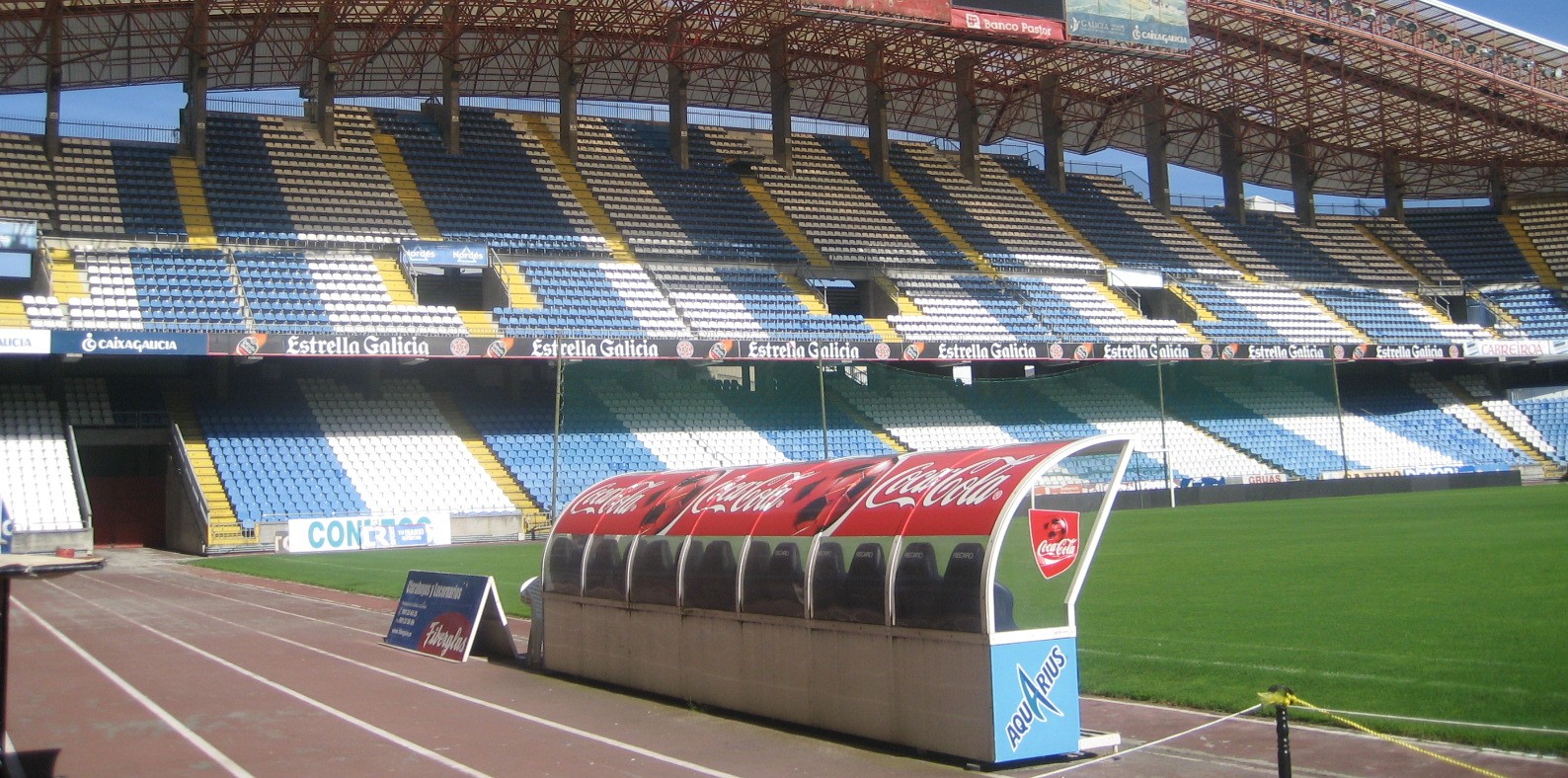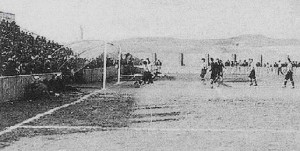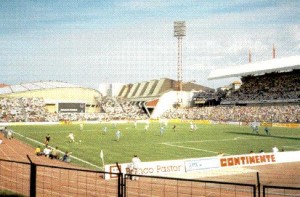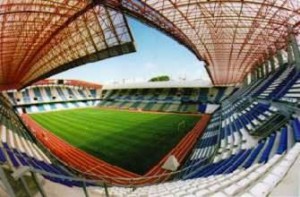- S.D. Eibar ready for maiden La Liga outing
- SD Eibar stengthen ahead of debut La Liga season
- Can ‘Super Mario’ live up to expectations in Madrid?
- MAN IN THE GROUND – Brentford 0 – 4 Osasuna
- Historic Basque derby welcomes S.D. Eibar to La Liga
- Munich to Madrid, via Brazil – Tony Kroos
- Rakitic in Spanish Switch
- Can Spain find redemption in Rio?
- Viva Espana! A season of redemption for Spanish football
- From the old to the new: who can fill the void in years to come for La Roja?
The Riazor – Home of Deportivo La Coruña
- Updated: 12 November, 2011

By Chris Clements (estadiosdefutbolenespana)
If, when it comes to stadiums, you are a “sad-o” (that’s my wife’s term, I prefer aficionado), then you are inevitably drawn to the weird and unusual.
Why settle for the staid and practical, when you can have illogical and unconventional? Over its four incarnations, The Riazor has provided the paying public of La Coruña and beyond with plenty of the weird and unusual.
So much so that when the Riazor’s present form was unveiled in 1998, some home fans rioted and tore out seats. It was probably too conformist for them.
Real Club Deportivo La Coruña was formed in 1904 and after playing at El Corralón de la Gaiteira and the local bullring, they moved to the Campo Riazor in 1909. This enclosure was in the grounds of the local catholic school and with the help of the municipality, basic facilities and terracing was added.
The ground took its name from the main beach in La Coruña and was actually closer to the Atlantic coast than the present stadium. It served the club for 35 years and saw top flight football when Depo was promoted to La Primera for the first time in 1941.
The Campo Riazor made way for the Estadio de Riazor in October 1944. This new stadium was built by the municipality 150 metres across the road from the old stadium and featured a low cantilevered stand on the north side.
On the west side, a tall marathon tower was built on top of the semi-circular terrace. The terracing continued around to the south side, where an additional tier of terracing, or anfitetro stood.
At the eastern seaboard end, instead of terracing, stood a row of arches leading to a practice pitch. An athletics track surrounded the pitch and Riazor was to become one of the leading stadiums for athletics on the Iberian Peninsula.
The stadium was used for an international when Spain played Portugal in May 1945, a month that also saw Depo’s relegation to La Segunda. The final of La Copa de Rey paid its one and only visit to La Coruña in 1947, when Real Madrid beat Espanyol 2-0.
The stadium remained unaltered for the next 35 years, except for the demolition of the arches at the eastern end in 1968, to make way the Palacio Deportes. At its peak, the Riazor had a maximum capacity of 45,000, but crowds of up to 60,000 were unofficially recorded.
La Coruña was a slightly surprising choice of venue for the 1982 World Cup. Depo was in the third division and Vigo, 100 miles down the coast, was also selected as a host.
The Riazor required almost total reconstruction and once again the municipality dipped into the public coffers and forked out over 80% of the 500 million pesetas bill. Two double-decker stands went up on either side of the pitch, whilst at the western end, two stands curved around the terrace, either side of the Marathon tower.
All four roofs were identical in design and reflected La Coruña’s maritime past, with sail-like roofs supported by cables that were anchored on concrete blocks behind each stand. For the duration
of the tournament, temporary stands were erected at the eastern end of the ground, giving it a new capacity of 29,000.
The Riazor staged three matches in the 1982 World Cup, involving Cameroon, Peru & Poland and shortly afterwards, Depo negotiated a 50 year deal with the municipality at a rate of 1 peseta per annum.
In 1997, despite being less than 15 years old, the lay-out of the Riazor was about to change again. Not satisfied with a 3-sided stadium and an athletics track between the stands and the pitch, the club and the municipality agreed to rebuild either end of the stadium and remove the athletics track.
The maritime theme of the two side stands was continued with the new double-decker ends and the whole stadium was bedecked in bands of blue and white seats. The new lay-out had an all-seated capacity of 34,600 and all were filled when Real Madrid were the visitors for the first match in February 1998.
Unfortunately, not all of the seats remained in place as local ultras, disenchanted at the loss of terracing, threw many onto the now nearby playing surface.
A little over two years later, disenchantment had made way for euphoria as Depo won their first and to date, only Primera title. Another Copa del Rey followed in 2002, and the stadium had all the trappings of a modern European stadium added, such as VIP lounges and large TV’s come scoreboards.
Today’s Riazor is certainly not as idiosyncratic as it once was and the marathon tower is now stuck behind the back of the west stand. As a modern football stadium it works well and compared to most it has character, but if you are looking for real character, check out the history books.
____________________
To read more on the footballing stadiums of Spain, visit Chris’s excellent site Estadios de fútbol en España
____________________
Follow @icentrocampista






You must be logged in to post a comment Login